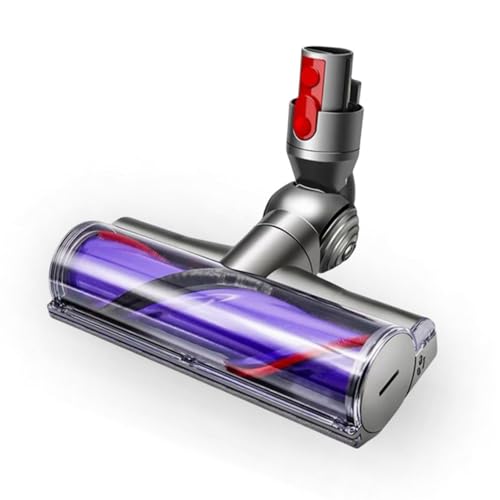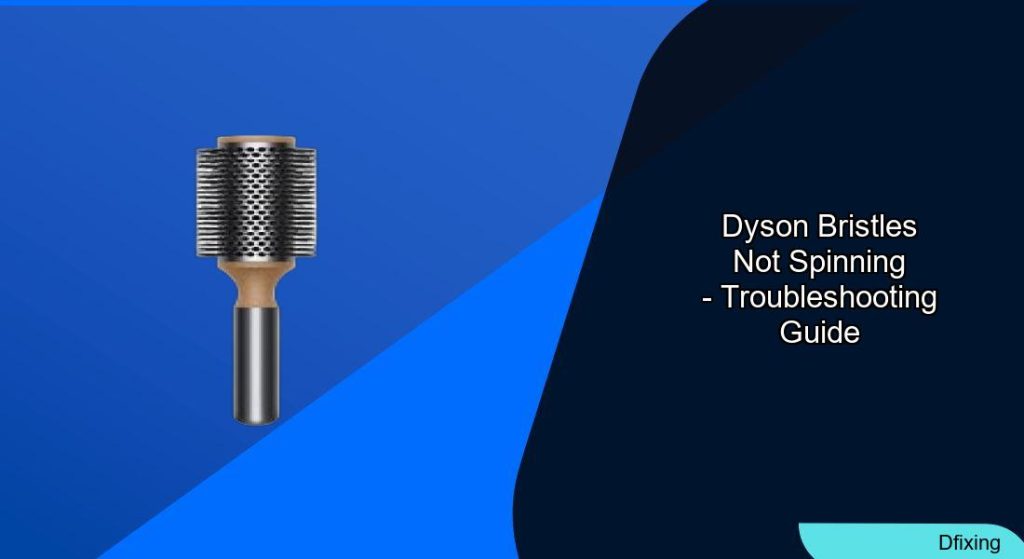Dyson vacuums are known for their powerful suction and innovative design, but when the brush bar stops spinning, cleaning efficiency plummets. This issue affects models like the V6, V7, V8, V10, V11, Syntec, and DC15. Whether caused by debris buildup, belt wear, or electrical faults, resolving it quickly ensures your vacuum performs at its best. This guide breaks down the root causes, step-by-step fixes, and model-specific tips to get your Dyson back in action.
Affiliate disclosure: As an Amazon associate, We'll earn a commission for every successful order through our affiliate links in the article. However, you won’t be charged anything for this.
Ignoring a non-spinning brush bar can lead to uneven cleaning and long-term damage. From tangled hair to motor malfunctions, the problem often has a straightforward solution. By following these troubleshooting steps and maintenance practices, you’ll save time and money while extending your vacuum’s lifespan.
Root Causes of Dyson Brush Bar Failure
Debris and Hair Accumulation
Hair, fibers, and debris frequently jam the brush roll, especially in high-traffic areas. Even minimal buildup can restrict movement, so regular inspection is critical. Hidden obstructions inside the spindle or housing require complete disassembly for thorough cleaning.
Worn or Broken Belt
The belt connects the motor to the brush bar. Over time, it can stretch, crack, or snap, disrupting power transfer. A slipping belt may produce a burning smell or visible wear marks. Replacement is often necessary to restore function.
Motor and Electrical Issues
Faulty wiring, damaged contacts, or motor failure can prevent the brush bar from spinning. Loose connections or dust-clogged contacts interrupt power flow. Resetting the vacuum or cleaning electrical leads with rubbing alcohol often resolves these issues.
Battery and Power Settings
Low battery power in cordless models like the V11 may disable the brush head to conserve energy. Verify the battery is fully charged and check floor settings—some modes disable the brush bar for hard floors.
Step-by-Step Troubleshooting Guide
Clearing Debris and Blockages
- Turn off and unplug the vacuum.
- Inspect the brush roll for tangled hair or fibers. Use scissors to cut away debris.
- Remove the brush roller cover with a coin, then pull out the brush roll.
- Clean the spindle and housing thoroughly, using a screwdriver to dislodge stubborn debris.
- Check for blockages in the wand, cyclone inlet, and canister. Use a slender object to push out obstructions.
Replacing the Brush Bar Belt
- Slide off the old belt from the motor shaft and brush bar.
- Install the new belt, ensuring it’s aligned properly. Spin the brush bar to confirm fit.
- Reassemble the head, avoiding overtightening to prevent strain on the motor.
- Detach the brush head by removing screws. If troubleshooting steps fail to revive your brush head, it may be time to consider a replacement. A new brush head can restore your Dyson’s cleaning performance and ensure effective dirt and debris removal.

Official Dyson V7 motorhead with quick-release design

Genuine Dyson high-torque brush for V11 models

Third-party motorhead for V7-V15 with multi-surface cleaning

Upgraded anti-tangle brush for V7-V11 with easy cleaning
Resetting Electronics and Cleaning Contacts
- Unplug the vacuum and hold the power button for 10 seconds to reset.
- Disassemble the canister and locate metal pins on the brush head and shaft.
- Clean contacts with rubbing alcohol and a cotton swab. For V6 models, focus on leads wrapped around the canister.
- Reconnect components firmly to restore electrical flow.
Model-Specific Fixes
Dyson V6 (DC59)
Hair and dust often clog electrical leads.
– Disassemble the canister, clean leads with rubbing alcohol, and inspect the brush head for smooth rotation.
– Realign the extension leads during reassembly to prevent future issues.
Dyson V11
Debris or airflow blockages commonly trigger brush bar failure.
– Manually remove minor debris from the brush bar.
– Deep clean using a coin to rotate the side notch, then clear internal obstructions.
– Check suction pathways for clogs in the filter or dust canister.
Syntec and Stick Vacuums
Hidden hair balls and spindle buildup are frequent culprits.
– Use a Torx screwdriver to remove the housing and extract compacted hair.
– Trim excess hair from the brush roller with scissors, avoiding red bristles.
Maintenance Best Practices
- Clean brush heads monthly to prevent hair accumulation.
- Inspect belts every 6–12 months for wear and replace as needed.
- Use model-specific tools like Torx screwdrivers or coins for disassembly.
- Avoid overfilling the dust canister, as this reduces airflow and strains components.
Frequently Asked Questions (FAQ)
Why does my Dyson brush bar stop spinning on hard floors?
Hard floor settings often disable the brush bar to prevent damage. Switch to carpet mode to re-enable spinning.
How do I know if my Dyson belt is broken?
A burning smell, visible cracks, or a brush bar that spins freely by hand but not during use indicate a worn belt.
Can low battery cause the brush head to stop?
Yes. Cordless models like the V11 may disable the brush bar when battery drops below 20%.
How often should I clean the brush roll?
Inspect after every 5–10 uses, especially if vacuuming pet hair or long fibers.
What if troubleshooting steps fail?
Contact Dyson support for diagnostics or replace the brush head with a compatible model from third-party sellers.
Conclusion
A Dyson vacuum’s brush bar not spinning is a fixable issue with the right approach. By addressing debris, belts, electrical connections, and battery health, most problems resolve quickly. Regular maintenance prevents recurring issues, while model-specific fixes ensure compatibility. If DIY methods fall short, reaching out to Dyson or opting for a replacement part restores functionality. Keeping your vacuum in peak condition ensures spotless floors and prolonged device lifespan.







